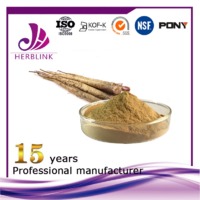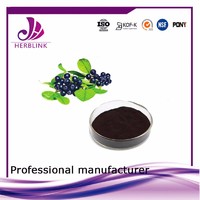Baobab Extract Baobab de Mahajanga Mozambique
Product Quick Detail
- FOB Price
- USD $99.00 / Piece
- Minimum Order
- 1
- Place Of Origin
- China
- Packaging
- N/A
- Delivery
- 15 Days
Specifications
Latin Name: Adansonia digitata L.
Synonyms: Abebrødstræ, Adansonia, Adansonia bahoba, Adansonia baobab, Adansonia digitata, Adansonia situla, Adansonia somalensis, Adansonsia sphaerocarpa, Adansonia sulcata, Adansonie d\' Afrique, Affenbrotbaum, African Baobab, Afrikaanse Kremetart, Afrikanisch
Part of Used: Bark or fruit
Specifications: 30:1, Polyphenol 35%
Appearance: Brown fine powder
Application: Medicine, food additive, dietary supplement
What is Baobab (Adansonia digitata) Extract?
Baobab (Adansonia digitata) is a tree native to certain tropical regions in Africa, including South Africa, Botswana and Mozambique. Known as \'The Tree of Life\', the baobab is an icon of the African savannah, a symbol of life and positivity in a landscape where little else can thrive. Growing wild in thirty-two countries across the continent, it is at the heart of many traditional remedies and folklore and can have a lifespan of up to 5000 years.The baobab is a prehistoric tree that is highly adapted to its environment. During the rainy season it absorbs and stores water in its trunk, enabling it to produce a nutrient-dense fruit when all around is dry and arid. This is how it became known as The Tree of Life,Baobab trees produce fruit with a powdery pulp found to contain high amounts of vitamin C. Often consumed as a food or added to beverages, baobab fruit is sometimes used for medicinal purposes.Seeds contain appreciable quantities of crude protein, digestible carbohydrates and oil, whereas they have high levels of lysine, thiamine, Ca and Fe. They can be eaten fresh or dried, ground into flour and thus added to soups and stews. Processing eliminates a number of anti-nutritional factors present in the seed. Baobab leaves are superior in nutritional quality to fruit pulp, and contain significant levels of vitamin A. The leaves are a staple for many populations in Africa, and are eaten fresh or dried. Several plant parts have interesting anti-oxidant and anti-inflammatory properties, and baobab has been used extensively since ancient times in traditional medicine.
Chemical constituents of Baobab (Adansonia digitata) Extract
Baobab because of its rich in A variety of vitamins and nutrients known as \"the tree of life\", the baobab and fruits are rich in including vitamin C, A, D, F, and riboflavin, niacin, A variety of vitamins and nutrientsThe bark, which contains several flavonols, has been distributed commercially in Europe under the name ‘cortex cael cedra’, as a fever treatment, and substitute for cinchona bark.
Chemical analyses have reported the presence of various potentially bioactive ingredients including triterpenoids,flavonoids and phenolic compounds.
Now is the main application of polyphenols
- Contact: yu zhang








